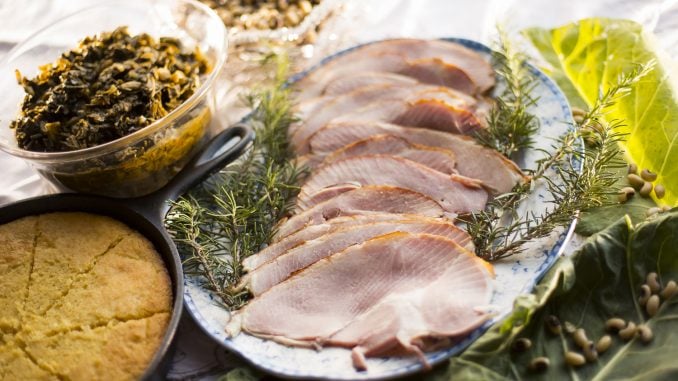
A fresh new year brings plenty of possibility. There’s just something about a clean slate to work with that has us all ready to take on the world. In the South we like to make sure we hedge our bets via our stomachs. Why not plan for a precipitous year by consuming just the right food?Even folks averse to resolutions have been known to eat this chosen meal to ensure a year of luck, health, and money.The folklore or tradition behind the ingredients, as well as the humble and tasty foods included, tell a story and there is a reason for making sure each item makes it onto the table.Black-eyed peas represent coins or good luck and prosperity.Much has been written about this legume from the cowpea family. Its inclusion on the menu, along with how much you consume, is integral to the meal. Multiple sources reference the fact that Union troops left the plentiful crop behind in the field because they thought it was only good for livestock. They were correct about it being for livestock as it was originally used as food for farm animals, but it went on to become a staple in Southern diets.Tradition says you are supposed to make sure you eat at least 365 black-eyed peas to lock down luck and prosperity for the entire year. You might get a few dirty looks if you hold up the serving line by counting out your peas, so just go ahead and eat a mess of them to be safe.Greens represent new beginnings and money.Be they collard, mustard, or turnip greens are a healthy winter crop. Collards are a good source of vitamins A and C. Best picked after the first frost, there are many ways to cook this hearty crop. If you’re looking to adhere to the “eat as much pork as possible” plan, then cook greens with some fatback. Its place at the first meal of the year can be attributed to the color green being associated with new beginnings and, of course, the color of money. There is even a tidbit of folklore out there that says you are supposed to save some uncooked greens to tack to your ceiling for good luck or hang over your door to ward off evil.Cornbread represents goldAgain with the money, clearly we are working toward financial success, so cornbread in some form finds its way to the table. The beautiful bright yellow of this Southern staple reminds us of gold, and bonus, it is a good way to sop things up.Pork represents luck and healthThe center of the New Year’s Day meal is the pig. You may choose to cook a ham, a pork roast, or there’s no reason you can’t get away with serving up barbecue. The pork is on the table for a variety of reasons, and tradition tells us one of the main ones is due to animal behavior. A pig cannot turn its head around to see behind, instead it must turn all the way around to see from whence it came. The pork luck also comes in with the way a pig eats. Folklore says that it is good luck to eat pork at this meal because a pig roots forward when it eats as opposed to beef who stand still, and chickens who scratch backwards. By all means, go right back to eating those after New Year’s Day, but don’t serve them on January 1. The perpetuation of the humble pig’s place on the menu goes even further it is said that the more pork you eat on New Year’s Day, the more luck you will have in the coming year. See above reference to cooking your greens with fatback.The stories of how this came to be the traditional Southern New Year’s Day meal may vary slightly, but it comes down to gathering around the table to celebrate and greet a new year together with grateful hearts.




